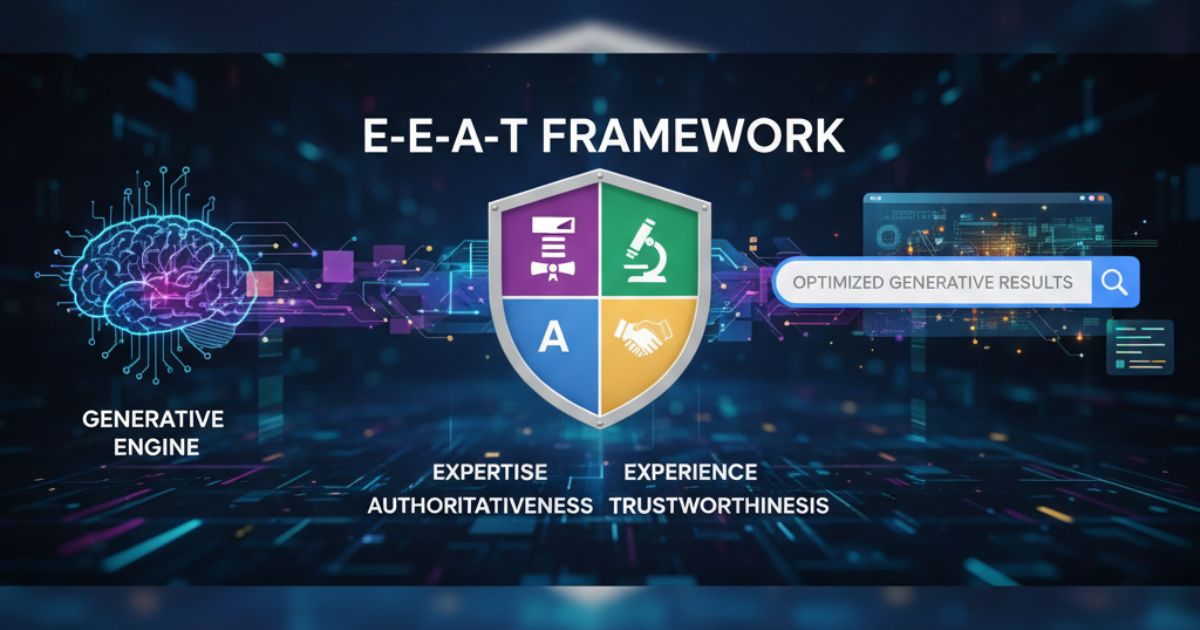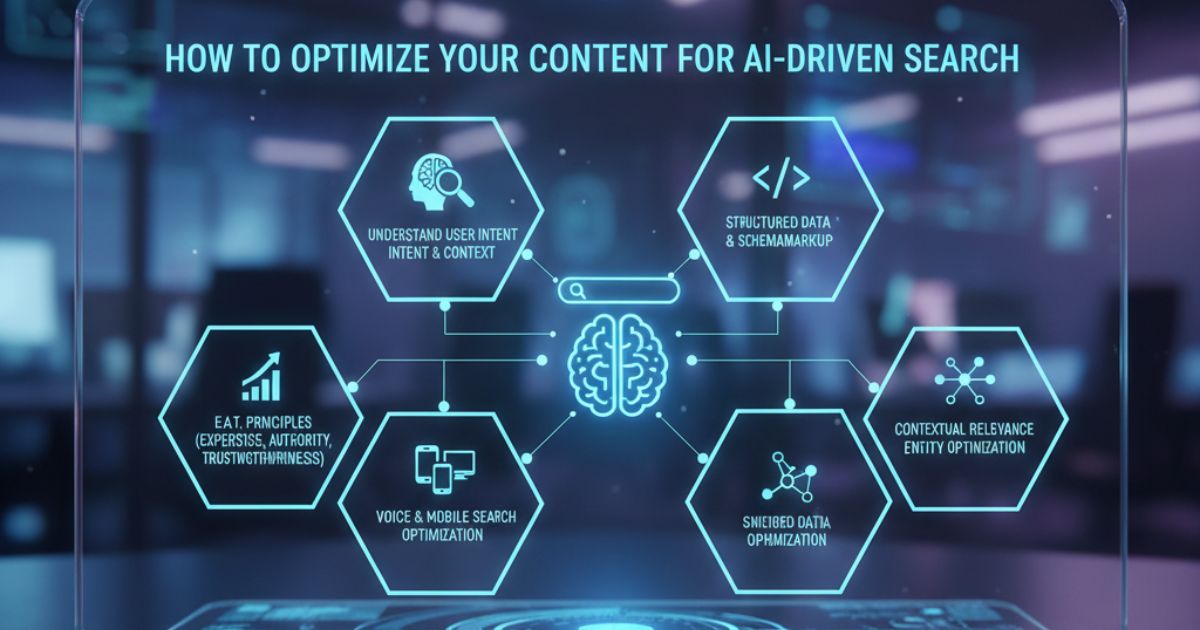Search Engine Optimization (SEO) is a constantly evolving field. For years, marketers have adapted to algorithm updates, from Panda to Penguin, refining their strategies each time to maintain visibility. Now, a new transformation is underway, driven by generative AI. With the rise of AI-driven search engines like Perplexity and Google’s AI Overview, the way users find information is undergoing a fundamental change. This shift calls for a new approach: Generative Engine Optimization (GEO).
This guide will explain what Generative Engine Optimization is and why it’s becoming essential for brand visibility. We’ll break down how AI is reshaping the search landscape and provide actionable strategies to help your content appear in these new AI-generated answers. By understanding GEO, you can position your brand at the forefront of the next evolution in digital marketing and secure your place in the future of SEO.
What is Generative Engine Optimization (GEO)?
Generative Engine Optimization (GEO) is the practice of optimizing web content to be discovered, understood, and featured by generative AI search engines. Unlike traditional SEO, which focuses on ranking in a list of blue links, GEO aims to have your content integrated directly into the conversational, summarized answers that AI models provide.
Think of it this way: when a user asks a question, the AI engine doesn’t just point to a website; it synthesizes information from multiple credible sources to construct a direct, comprehensive answer. Your goal with GEO is to ensure your content is one of those trusted sources. This requires a deep focus on creating clear, authoritative, and well-structured information that an AI can easily process and reference.
The rise of AI-driven search is not a distant concept; it’s happening now. Google’s Search Generative Experience (SGE) and AI Overviews are already changing the search results page. These tools pull information from various websites to create a snapshot answer at the top of the page, often pushing traditional organic results further down. To succeed in this new environment, marketers must adapt their approach from simply ranking to becoming an authoritative voice that AI engines trust and cite.
SEO vs. GEO: Understanding the Key Differences
While GEO is an evolution of SEO, not a replacement, there are fundamental differences in their objectives and tactics.
|
Aspect |
Traditional SEO |
Generative Engine Optimization (GEO) |
|---|---|---|
|
Primary Goal |
Rank in the top positions of the Search Engine Results Page (SERP). |
Be featured and cited as a source within an AI-generated answer. |
|
User Interaction |
User clicks a link to visit a webpage to find the answer. |
User gets a direct, summarized answer on the SERP without clicking. |
|
Content Focus |
Keyword optimization, backlinks, and technical performance. |
Factual accuracy, clarity, expertise, and structured data. |
|
Success Metric |
High rankings, organic traffic, and click-through rates (CTR). |
Brand mentions, citations, and visibility within AI summaries. |
The core of traditional SEO has been about signaling relevance to search engine crawlers through the use of keywords and backlinks. GEO, on the other hand, is about signaling trustworthiness and expertise to AI models. These models prioritize content that is not only relevant but also factually accurate, well-explained, and clearly attributed to a credible source. This is where concepts like Semantic SEO and Google’s E-E-A-T guidelines become more critical than ever.
The Role of E-E-A-T in Generative Engine Optimization

Google’s E-E-A-T guidelines (Experience, Expertise, Authoritativeness, and Trustworthiness) are the bedrock of modern SEO, and they are even more crucial for GEO. AI models are designed to identify and prioritize content that demonstrates these qualities, thereby helping to prevent the spread of misinformation.
Here’s how each component of E-E-A-T influences your GEO strategy:
- Experience: AI engines value content that comes from first-hand experience. If you are reviewing a product, show that you’ve actually used it. Include original photos, personal anecdotes, and unique insights that can’t be found in a generic product description.
- Expertise: Demonstrate deep knowledge of your subject. Write comprehensive articles, define complex terms simply, and cover topics in-depth. This shows the AI that you are an expert in your field.
- Authoritativeness: Build your brand’s authority in your niche. Secure mentions from other reputable sites, be active in industry communities, and create a strong digital footprint. When other authorities cite you, AI models take notice.
- Trustworthiness: Be transparent and honest. Clearly cite your sources, link to original data, and make it easy for users to contact you. A professional “About Us” page, clear author bios, and secure HTTPS are all trust signals for both users and AI.
By building your content on the foundation of E-E-A-T, you send strong signals to generative AI engines that your information is reliable and worthy of being included in their answers.
How to Optimize Your Content for AI-Driven Search

Adapting your content strategy for GEO marketing doesn’t mean abandoning everything you know about SEO. Instead, it involves refining your approach to meet the specific needs of AI models. Here are five practical strategies for effective Generative Engine Optimization.
1. Embrace Semantic SEO
Semantic SEO is the practice of creating content centered around specific topics, rather than focusing solely on keywords. It focuses on providing context and building relationships between different concepts. AI models think in terms of entities (people, places, things, concepts) and the relationships between them.
To implement Semantic SEO:
- Build Topic Clusters: Create a central “pillar” page for a broad topic and link out to “cluster” pages that cover related subtopics in more detail. This structure enables AI to comprehend the breadth and depth of your expertise.
- Use Related Keywords: Go beyond your primary keyword. Use tools like Google Keyword Planner or Ahrefs to find related terms, synonyms, and questions people are asking. Incorporate these naturally into your content.
- Answer Questions Directly: Structure your content to answer specific questions. Use clear headings (H2s, H3s) for each question to make it easier for AI to extract the information.
2. Prioritize Factual Accuracy and Clarity
Generative AI is designed to provide factual information. Any inaccuracies or ambiguities in your content can cause an AI to overlook it.
- Fact-Check Everything: Double-check all data, statistics, and claims. Link to your original sources to demonstrate transparency and allow the AI to verify your information.
- Write Simply and Clearly: Avoid jargon and overly complex language. Use short sentences and paragraphs. The goal is to make your content easy for both humans and machines to understand. Aim for a Flesch reading-ease score of 60 or higher.
- Define Key Terms: If you use technical terms, define them clearly and precisely. This not only helps your audience but also provides the AI with clear definitions it can use in its answers.
3. Structure Your Content for Machines
AI models need well-structured data to process information efficiently. Simple formatting can make a huge difference.
- Use Descriptive Headings: Your headings should clearly describe the content that follows. Use a logical hierarchy (H1, H2, H3) to organize your information.
- Leverage Lists and Tables: Bullet points, numbered lists, and tables break down complex information into easily digestible chunks. AI often pulls directly from lists and tables to create its summarized answers.
- Implement Schema Markup: Schema markup is a type of microdata that informs search engines about the content’s subject matter. Use schemas for articles, FAQs, how-to guides, and products to provide AI with explicit context.
4. Optimize for Conversational and Long-Tail Keywords
AI-driven search is often conversational. Users are asking questions in natural language, just as they would to a person.
- Target Question-Based Queries: Identify the questions your audience is asking. Use tools like AnswerThePublic or browse forums like Quora and Reddit to find common questions in your niche.
- Incorporate Long-Tail Keywords: Long-tail keywords (phrases of three or more words) are often more specific and conversational. Create content that directly addresses these detailed queries.
5. Build Your Brand’s Digital Authority
Ultimately, AI wants to source information from brands it trusts. Building your brand’s authority is a long-term GEO strategy.
- Create a Comprehensive “About Us” Page: Clearly state who you are, your mission, and your expertise.
- Showcase Author Expertise: Include detailed author bios with credentials, experience, and links to social profiles or other publications.
- Earn Links and Mentions: While link building for GEO is less about quantity and more about quality, earning links and unlinked brand mentions from other authoritative websites signals to AI that your brand is a recognized leader in your field.
Preparing for the Future of SEO
Generative Engine Optimization is more than just a new marketing buzzword; it represents a fundamental shift in how information is discovered and consumed online. While the blue links of traditional search aren’t disappearing overnight, AI-generated answers are quickly becoming a dominant feature of the search experience.
Brands that adapt now will build a significant competitive advantage. By focusing on creating high-quality, trustworthy, and well-structured content, you can position your brand as an authoritative source in the eyes of both your audience and the AI engines that serve them. The future of brand visibility lies in your ability to establish yourself as a trusted voice in the new landscape of AI-driven search, where concepts like AI sensory branding further shape how people connect with digital experiences.
Start by reviewing your existing content through the lens of E-E-A-T, embrace Semantic SEO, and structure your information for clarity. This is not just an optimization tactic—it’s a commitment to becoming the most helpful and reliable resource in your industry.
FAQs about Generative Engine Optimization
Is SEO dead?
No, SEO is not dead; however, it is constantly evolving. Traditional SEO practices remain important for visibility, but they must now be integrated with geo-strategies to stay competitive in an AI-driven search environment. Think of GEO as the next layer of your SEO efforts.
How do I measure the success of GEO?
Measuring GEO is different from traditional SEO. Instead of focusing solely on rankings and traffic, you should also track brand mentions within AI-generated answers, citations of your content, and overall brand visibility in search. Tools are still being developed for this, but manual checks and brand monitoring software can help.
What is the difference between GEO and Answer Engine Optimization (AEO)?
GEO and AEO are closely related concepts. AEO focuses on optimizing content to appear in direct answer boxes (like featured snippets). GEO is a broader term that encompasses optimization for all forms of AI-generated search results, including conversational chatbot answers and complex summaries that synthesize information from multiple sources.




